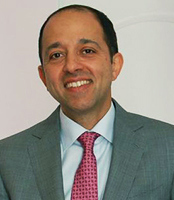 The various bones correlating to the upper face, mid face and lower face are all subject to breakage from various types of injury.
The various bones correlating to the upper face, mid face and lower face are all subject to breakage from various types of injury.
In less populated and suburban locales, motor vehicle accidents are more frequently the cause of fractures especially to the mid-face. Often, not wearing a seatbelt is cited as a contributing factor. Reportedly, nearly 70% of car accidents result in some form of facial trauma. This encompasses not only fractures but also soft tissue damage involving muscles, ligaments and tendons. In some cases nerve damage is also evident. In urban areas, especially, criminal assaults are likely causes of damage to the frontal bone and frontal sinus, nasal bones, lower jaw and cheekbone. Wounds from gunshots or knives, domestic violence, child abuse and elderly abuse are other important causes of facial trauma.
Another often seen cause of facial fractures is participation in recreational sports. In The U.S., 35 million kids ages 5-18 play organized sports like football, baseball, basketball, soccer and lacrosse. Direct body contact is the most prevalent cause of sports related facial trauma. Forceful contact can occur between a player’s face and another player’s head, fist, elbow, foot or other body part.
Participation in martial arts training – judo, jujitsu, karate, kickboxing and kung fu, among other disciplines – is also on the rise among the youth population. Striking martial arts result in more injuries to the head, face, nose and mouth. Blunt trauma to the mid-face can cause nasal fractures, reportedly one of the more common facial fractures incurred by mixed martial arts contenders.
Contact with balls, pucks, sticks, bats, or other sporting gear present their own opportunity for trauma to occur; so does impact with the playing surface or even stationary objects like goalposts or other apparatus.
Other less common causes of facial fracture include falls and industrial accidents. Regardless of cause, no facial injury should be taken lightly. If a person is unconscious, disoriented, nauseated or dizzy, call 911 immediately. Do not attempt to move the person. Even if the person is not exhibiting such symptoms after a blow to the face, it is prudent to take the person to the nearest hospital emergency room as quickly as possible to have the severity of the injury professionally evaluated.
Any facial trauma has the potential to be very complicated because of the critical role the face plays in breathing, eating, speaking and seeing. Even surface injuries like lacerations that require stitches may benefit from treatment by a specialist trained in the precision required to achieve the best outcome cosmetically.
 Kayvon Haghighi, DDS, MD, FACS is licensed to practice both medicine and dentistry in the state of New Jersey. Dr. Haghighi’s unique combination of surgical training and experience in facial reconstruction enables him to analyze your condition from multiple points of view.
Kayvon Haghighi, DDS, MD, FACS is licensed to practice both medicine and dentistry in the state of New Jersey. Dr. Haghighi’s unique combination of surgical training and experience in facial reconstruction enables him to analyze your condition from multiple points of view.
